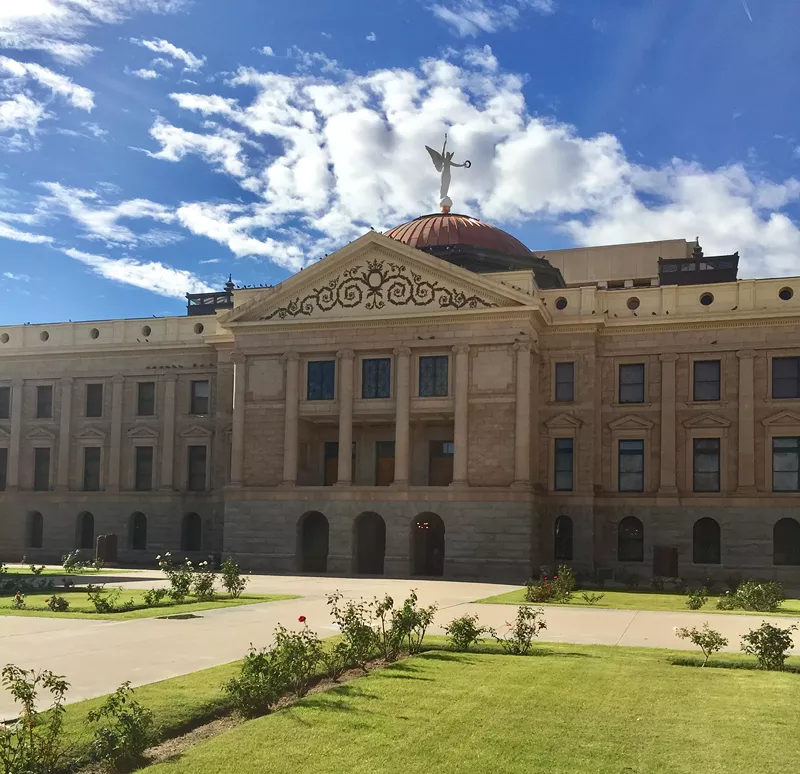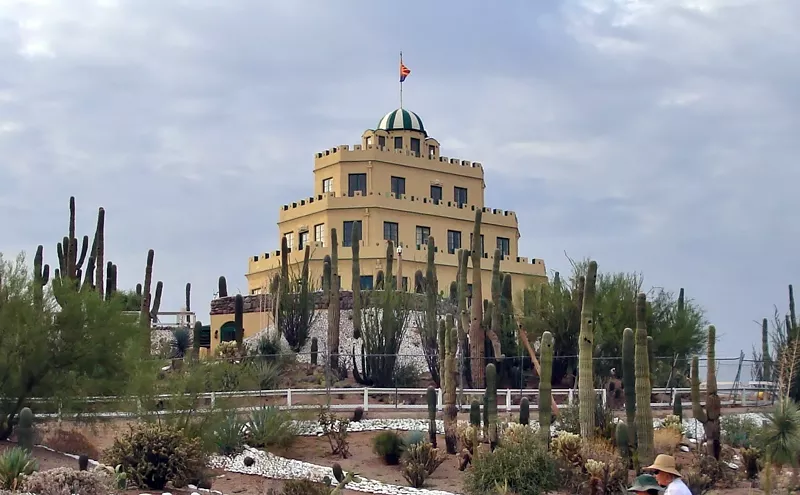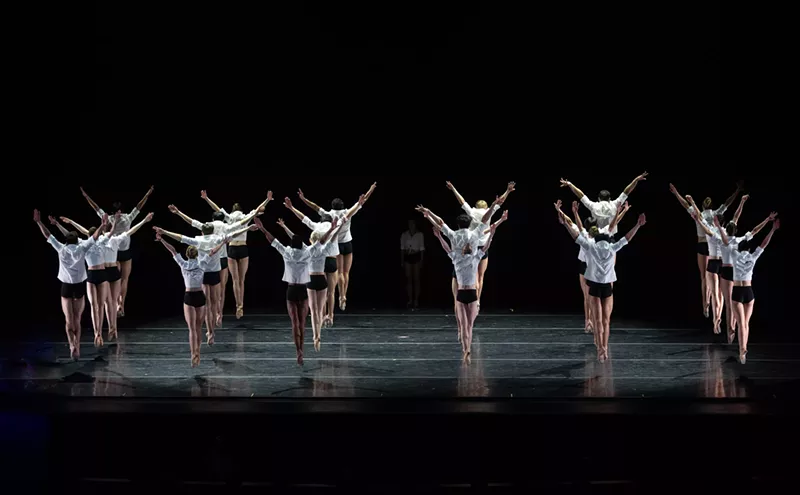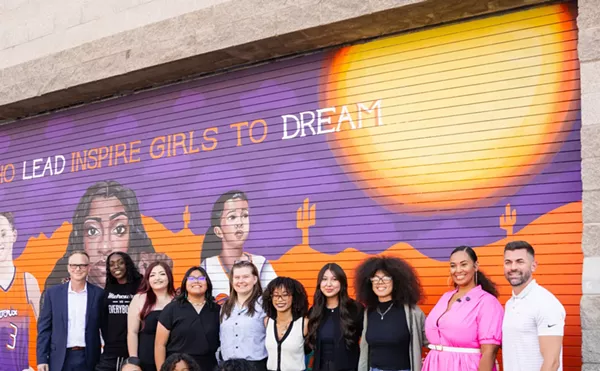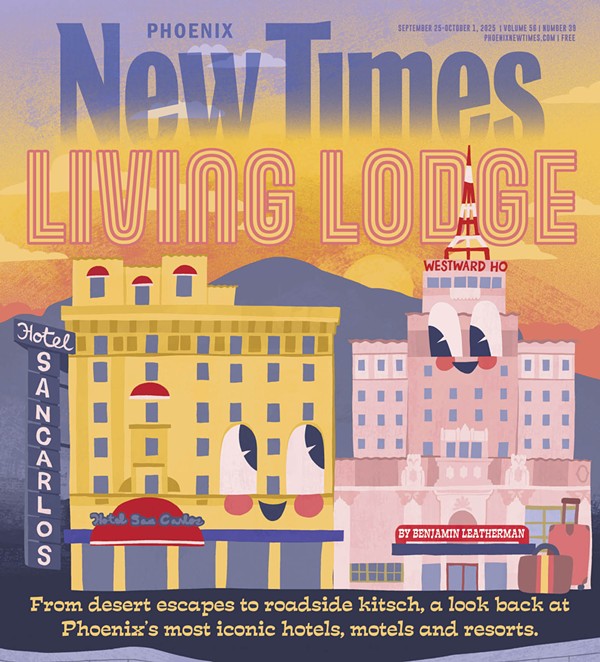Copper, cattle, cotton, citrus, and climate are the original “five C’s” of the Arizona economy. While copper has spent time up and down as a commodity, its economic impact on the Grand Canyon State is roughly $4.3 billion per year, according to the Arizona Mining Association. Today, more than a century since Arizona officially gained statehood on Valentine's Day 1912, approximately 66 percent of U.S. copper is still mined here, just an hour east of the Valley.
Recently, copper has been cited as a hot trend in real estate by industry insiders, including Residential Building magazine and Realtor mag. Some of copper's advantages as an architectural building material include its durability, attractive patina, and ability to form complex shapes. Several award-winning “smart buildings” in the Valley have prominently used copper in the past decade or so.
Arizona's plentiful natural resource not only reflects the colors of the desert landscape as it glints in the Valley sun, but also serves important architectural functions like keeping a building cool.
Here are 10 architectural gems in the Valley featuring copper, many of which have won awards for design and environmental excellence, and several of which are Leadership in Energy and Environmental Design (LEED) certified by the U.S. Green Building Council, which sets national standards for environmentally responsible architecture.

The dome above the Arizona Capitol Museum features more than 2,000 square feet of copper.
Colleen O'Donnell Pierce
Built in 1901, the historic seat of Arizona’s territorial and state government on the western edge of downtown Phoenix embodies the spirit of the state's pioneer days. Copper gleams atop a nearly 2,100-square-foot dome. For the 2012 centennial, the dome received a facelift with a fresh overlay of newly milled copper (though the copper used for the project was reportedly sourced from a smelting mill in Pennsylvania that uses copper from various U.S. mines). Still, as an icon of the Copper State, the Arizona Capitol Museum dome stands as an enduring symbol of the state’s natural treasures. The neoclassical building, designed by architect James Riely Gordon, houses highlights of Arizona’s maverick history. For details on tours and other information, visit the Arizona Capitol Museum's website.
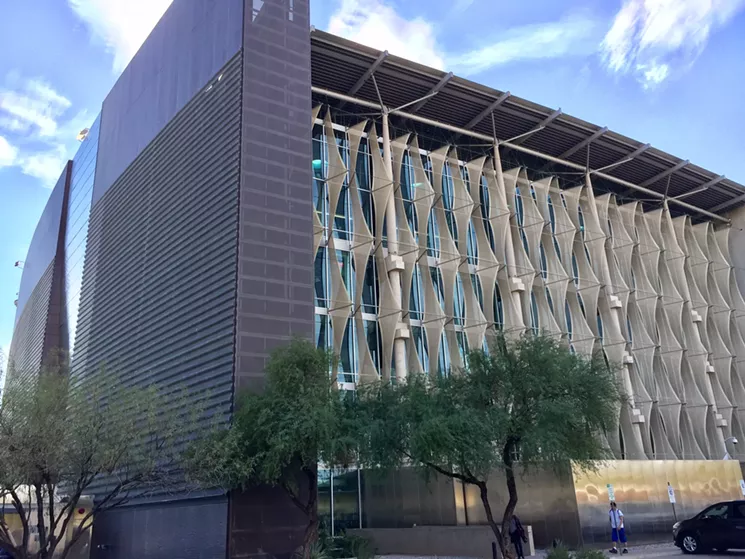
The Burton Barr Central Phoenix Library uses copper to screen out intense midday sunlight and heat.
Colleen O'Donnell Pierce
The city’s main library in downtown Phoenix is an early example of “smart building” strategies in the Valley. Designed by DWL Architects in collaboration with Will Bruder and built in 1995, the 280,000-square-foot landmark has been cited by building experts, including the American Institute of Architects, as a role model for its environmentally responsible architecture. Straddling Interstate 10 on Central Avenue, the building is covered with copper rain and sun screens on the east and west sides to keep morning and afternoon sunshine from pushing up cooling costs. A system of shutters on the south-facing exposure that tracks along with the movement of the sun maximizes use of natural lighting, while minimizing glare and heat gain, keeping library-goers cool. The shaded windows to the north offer panoramic views of the city. For library hours, event schedules, and other information, visit the Burton Barr Central Library website.
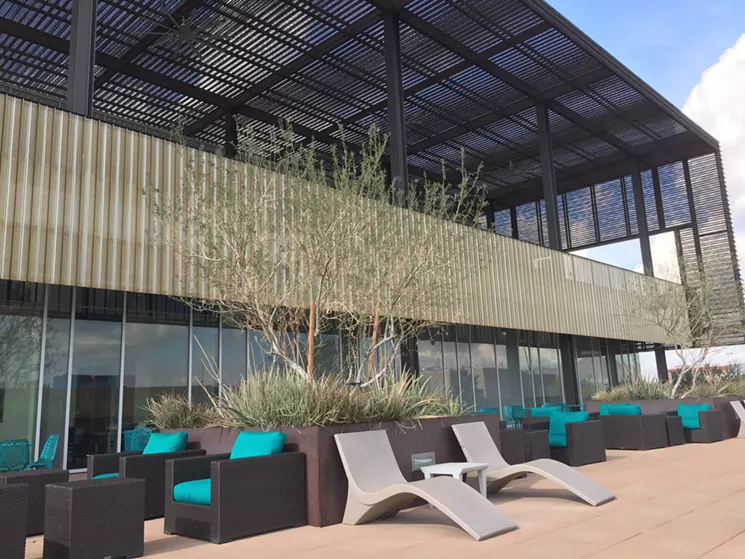
Copper keeps students cool at Gateway Community College by shading from the sun and providing breezeways.
Colleen O'Donnell Pierce
Designed to serve as a prime social gathering and study spot, this Gold LEED-certified building stands at the center of the Gateway Community College campus, located near Phoenix Sky Harbor Airport, and is the largest building in the Maricopa Community College District. Architects SmithGroup JJR used custom-made perforated copper panels to create shaded outdoor student spaces. The terrace on the south façade is situated to take advantage of cooling breezes and offer open views of the campus. The building, which opened in fall 2012, was a winner in the 2013 Copper Development Association's North American Copper in Architecture Awards and also received an Award of Merit in the 2015 Valley Forward Association’s Environmental Excellence Awards. For more information, visit the Gateway Community College website.

Designed to resemble canyon rock formations, the health sciences education building on the Phoenix Biomedical campus is covered with 6,000 copper panels.
Colleen O'Donnell Pierce
Covered top to bottom in a cooling copper skin designed to look like rock strata, this structure was recently featured on PBS’s Cool Spaces! The Best New Architecture television show. Nearly 6,000 panels of recycled copper were arranged in a layered pattern inspired by Arizona’s canyon formations to create the building’s striking exterior. Facing Seventh Street on the Phoenix Biomedical Campus of the University of Arizona Medical School, this 268,000-square-foot building in downtown Phoenix houses the U of A medical school, pharmacy and college of public health, as well as Northern Arizona University's College of Health and Human Services. Built in 2012 from a CO Architects design, this building was another 2013 winner in the North American Copper in Architecture Awards. For more information, visit the Phoenix Biomedical Campus website.
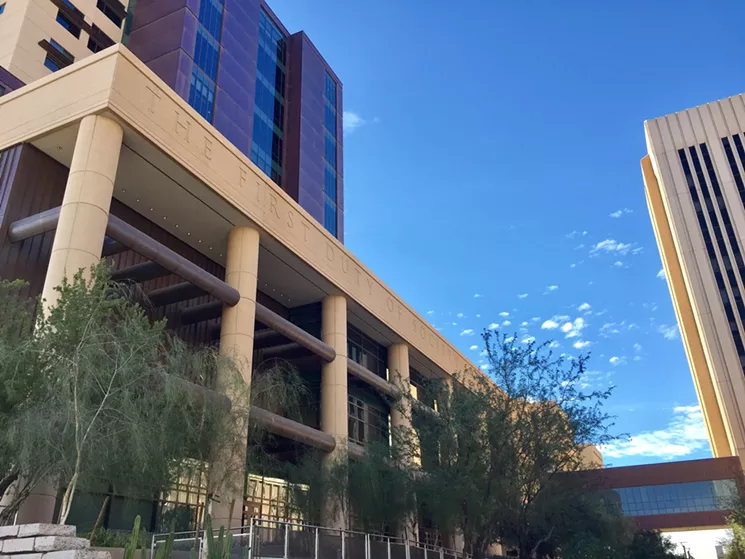
Both the 16-story Maricopa County court tower and pedestrian bridge are clad in cooling textured copper.
Colleen O'Donnell Pierce
Engineered to help reduce stress for court visitors, this downtown Phoenix county courthouse tower features a winding path, terraced planters, and a plaza with public art, as well as a separate secure entrance for victims of crime. The exterior of this 16-story, 695,000-square-foot building at Madison Street and First Avenue is covered with 182,750 square feet of recycled copper, chosen for its durability and to soften the scale of the large tower. The malleable metal is textured, alternating flat and tapered standing-seam copper panels. The complex also features a copper-clad pedestrian bridge connecting the new tower to the existing court campus. This building, completed in 2012 and designed by Gould Evans Associates, was one of Phoenix’s three 2013 winners in the North American Copper in Architecture Awards. For more information about the court, visit the Maricopa County Superior Court website.
Read on for more of metro Phoenix's copper-adorned architectural gems.
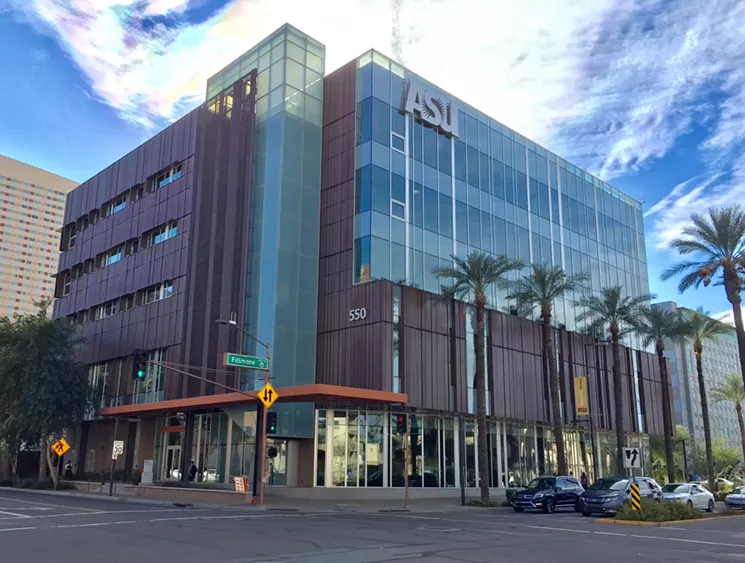
Three different textures of copper skins protect ASU's College of Nursing and Health Innovation from the elements.
Colleen O'Donnell Pierce
Built for the rapidly expanding ASU downtown Phoenix campus in 2009, this Gold LEED-certified building is fitted with a copper skin for shade and was designed with special attention to passive solar design, recyclable materials, and energy and water efficiency. The building’s 11 awards include an Award of Merit for Environmental Excellence from the Valley Forward Association, a Citation Award from the American Institute of Architects and a 2011 North American Copper in Architecture Award. The copper panels of the 84,000-square-foot building alternate three profiles in a randomly repeating pattern to create texture and a play of light and shadow. Perforations in the panels provide air movement and shading, while a glass curtain wall on the north side distributes natural light. The building, designed by SmithGroup JJR, houses learning and research facilities for 3,000 students. For more information about the college, visit the ASU College of Nursing and Health Innovation website.
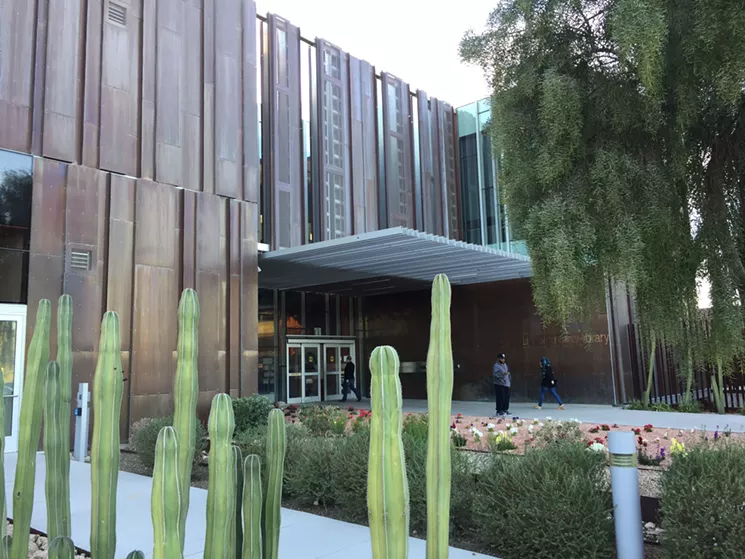
Created to resemble barcodes and integrated circuits, copper panels shield from the sun while letting in natural light at South Mountain Community Library.
Colleen O'Donnell Pierce
The winner of nine architectural awards, the South Mountain Community Library opened in 2011 on the South Mountain Community College campus and is also a public library. The steel structure, located in the heart of South Phoenix, is clad in a naturally ventilating copper rain screen created to resemble a digital bar code. The copper screen also reflects natural light inside the building, and alternating glass and copper allows natural daylight in while providing patrons a view of the campus gardens. Designed by richärd+bauer architecture, and modeled after an integrated circuit, its accolades include an Excellence in Design in Education from the International Interior Design Association, the 2012 North American Copper in Architecture Award and the Valley Forward Crescordia Award for Environmental Excellence. For hours and additional information, visit the South Mountain Community Library website.
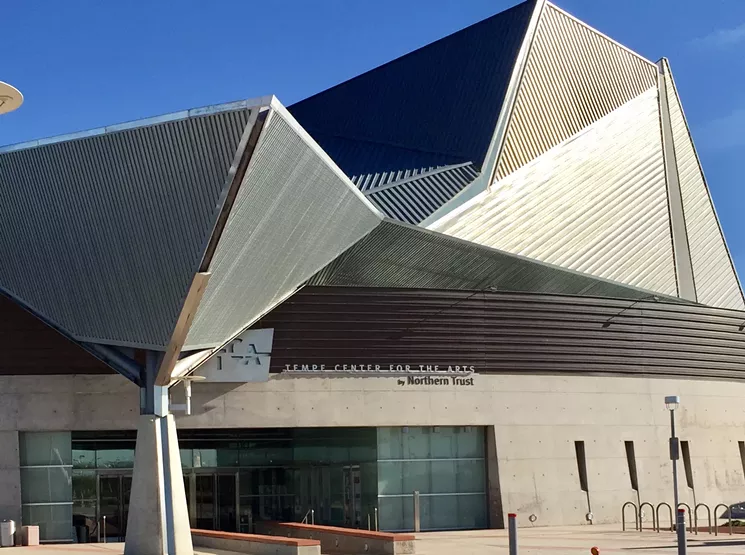
The copper and steel roof of Tempe Center for the Arts was inspired by the buttes of Arizona.
Colleen O'Donnell Pierce
The angular steel and copper roof of this highly visible structure on Tempe Town Lake is an architectural nod to nearby Hayden Butte and Monument Valley in northern Arizona. The arts center's roof was created to produce a different silhouette on the skyline from every angle. The building, designed by Tempe-based Architekton, has been noted in architectural journal ArchDaily as an excellent example of regional architecture that responds to Arizona’s unique desert climate. The center houses a 600-seat theater, a 200-seat studio theater, a 3,500-square-foot gallery and a multipurpose lakeside room. The venue, which opened in 2007, is home to a number of the city’s locally produced art programs, as well as several music ensembles and dance and theater companies. For schedule and additional information, visit the Tempe Center for the Arts website.
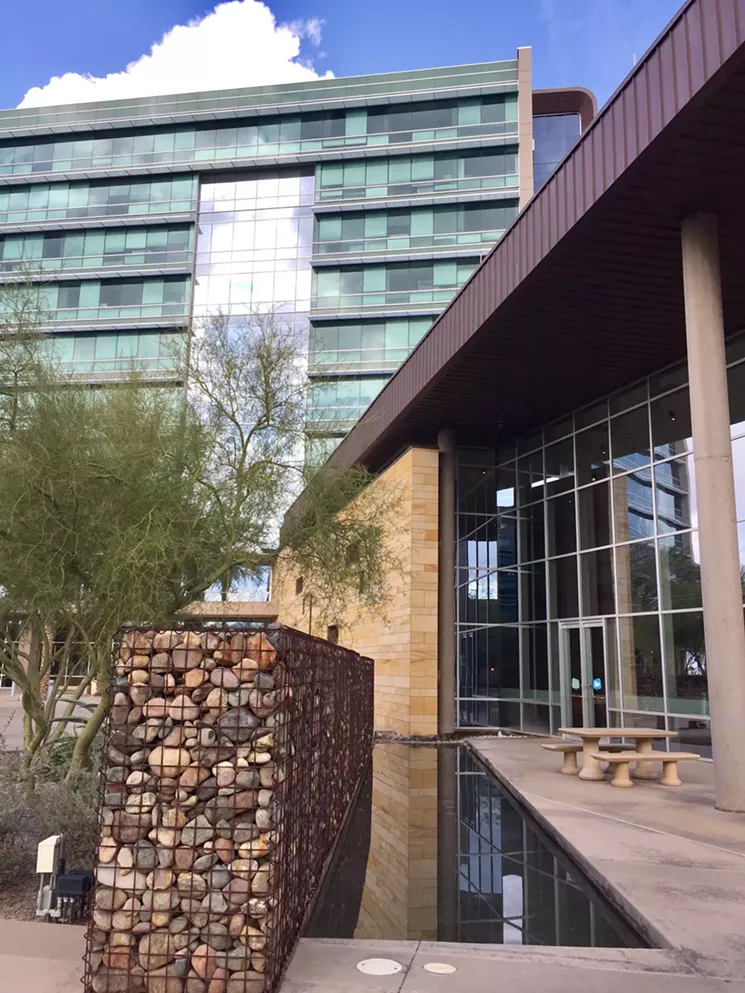
Riverpoint Center at University of Phoenix's corporate campus has won five awards, including the North American Copper in Architecture Award.
Colleen O'Donnell Pierce
Conceived to bring to mind a riverbed landscape, the University of Phoenix corporate campus features carved channels that flow through the site — and through the buildings themselves. The 10-story Riverpoint Center forms the visual focal point of the campus, and faces Interstate 10, visible to traffic in both directions. Copper, colored concrete and glass were chosen as building materials to echo Sonoran Desert colors. The buildings are positioned to maximize daylight on the south and minimize east and west sun exposure, reducing operating energy costs. This building has won five awards, including the 2015 North American Copper in Architecture Award and an Environmental Excellence Award from the Valley Forward Association. For more information about the college, visit the University of Phoenix website.
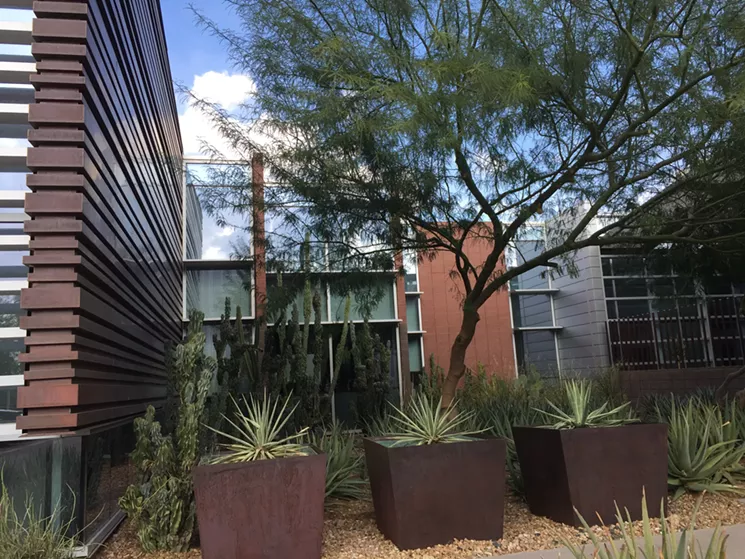
Conductive copper symbolizes communication at the Center for Entrepreneurial Innovation.
Colleen O'Donnell Pierce
Imagined by architects at SmithGroup JJR as a way to symbolize a synthesis of the campus DNA and brand, the Center for Entrepreneurial Innovation is a research and business incubator located on the Gateway Community College campus in Phoenix. According to its designers, the building concept stands as an invitation to technology startups to integrate with and engage the campus and its resources and talent. Opened in 2013, the project features ribbed copper panels and galvanized-steel wall panels. Architects utilized copper to express the collaborative activities between entrepreneurs, investors, and researchers at the project's core. For more information about the center, visit the Center for Entrepreneurial Innovation website.

